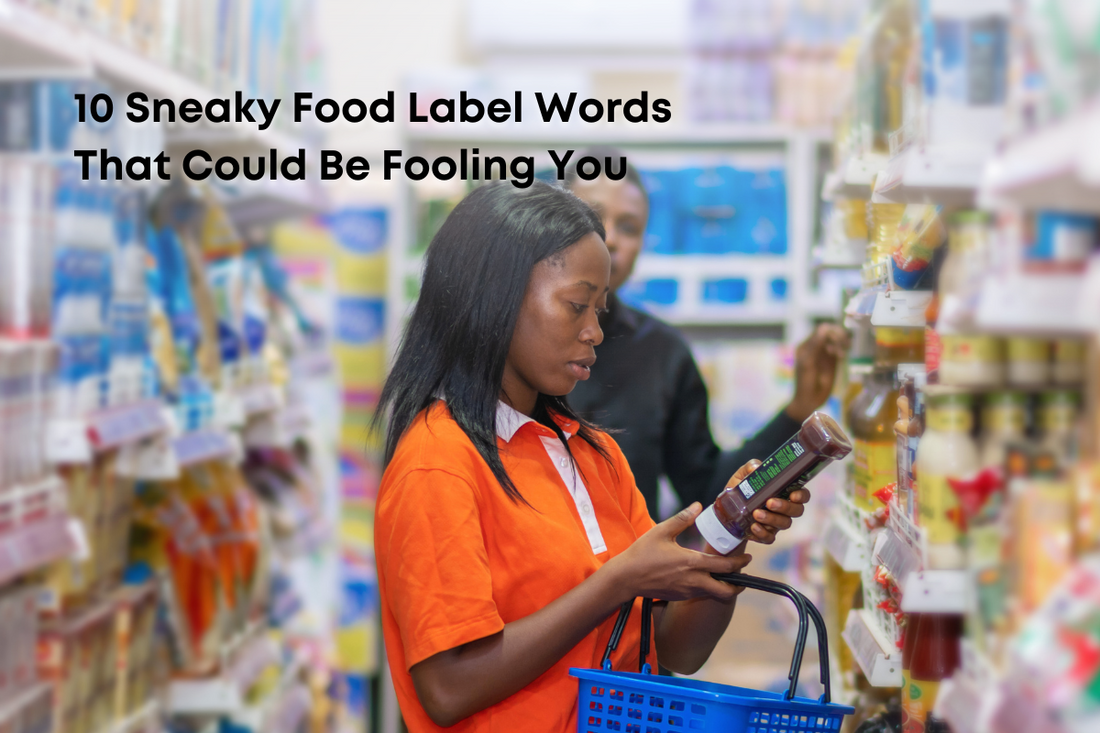10 Sneaky Food Label Words That Could Be Fooling You
The health-conscious consumer of today has an array of food labels designed to catch your eye and give you confidence. Terms like "natural," "multigrain," and "organic" sound wholesome, but sometimes they’re nothing more than clever marketing tricks. These buzzwords mask the real ingredients hiding in plain sight. In this blog post, we’ll expose 10 sneaky food label terms that could be misleading you. So, let’s get into why those back-in-the-good-old-days practices are outdated and how you can shop smarter by reading the fine print on your food packaging.
1. "Natural" Isn't Always Clean
The word "natural" sounds like it should mean pure and unprocessed, right? Well, not according to the FDA. There’s a loophole that allows foods loaded with chemicals, preservatives, and other processed ingredients to still carry the "natural" label. If you're aiming for a clean diet, don’t just trust the "natural" label—always check the ingredient list.
2. "Multigrain" Isn't Whole Grain
Just because a food is labeled as "multigrain" doesn’t mean it’s packed with whole grains. It simply means the product contains multiple types of grains, which could still be refined and processed. If you want the benefits of whole grains, look for the "100% whole grain" label. Otherwise, you're just getting processed stuff.
3. "No Added Sugar" May Still Contain Sweeteners
A product claiming "no added sugar" sounds healthy, right? But that doesn’t mean it’s sugar-free. Natural sweeteners like fruit juice concentrate or honey can still raise your blood sugar just as much as regular sugar. Always check the nutritional info for grams of sugar and pay attention to which sweeteners are used.
4. "Light" or "Lite" Isn't Always Lighter in Calories
We often associate "light" foods with fewer calories, but that’s not always the case. "Light" can refer to things like taste, color, or texture, rather than a reduction in fat or calories. Many "light" products have extra sugar or salt added to compensate for lost flavor. Always compare the nutrition facts with the regular version to see what you're really getting.
5. "Fat-Free" Could Have Loads of Sugar
A "fat-free" label might make you think you're getting a healthier option, but it often means the food is packed with sugar or artificial flavors to make up for the missing fat. Just because a product is fat-free doesn’t mean it’s calorie-free. Pay attention to the full nutrient profile, not just the fat content.
6. "Cholesterol-Free" Is Not a Free Pass
Cholesterol-free sounds like a dream for heart health, but it doesn't guarantee a healthy product. Foods labeled as "cholesterol-free" can still be high in unhealthy fats, which can raise your cholesterol levels. Always check the fat content to make sure the product is truly heart-healthy.
7. "Gluten-Free" Is Not Always Healthy
Gluten-free might be the go-to choice for those with celiac disease or gluten sensitivity, but if you don’t have those issues, going gluten-free might not be a healthier option. Many gluten-free products are highly processed and contain added sugars and fats to compensate for the lack of gluten. Instead of opting for gluten-free processed junk, focus on whole, nutrient-dense foods.
8. "Organic" Foods Can Still Be Junk Food
Just because something is labeled "organic" doesn’t automatically mean it’s healthy. Organic foods are grown without synthetic pesticides, but that doesn’t mean they’re low in fat, salt, or sugar. Organic cookies are still cookies, and they might not be the healthiest choice. Always check the nutritional information, even on organic products.
9. "Made with Real Fruit" May Be a False Advertisement
When you see "made with real fruit," you might think you're getting something wholesome. However, this term often refers to products with very little fruit—just a small amount of fruit juice concentrate or powder. For the health benefits of real fruit, stick with whole fruits or look for products that list fruit as a primary ingredient.
10. "Serving Size" Ploys Can Trick Perception
Food manufacturers sometimes use misleading serving sizes to make their products seem healthier. For example, a single serving of juice might be labeled with a much smaller portion size, which makes the sugar content seem lower than it is. But if you drink the whole bottle, you're getting way more sugar than the label suggests. Be mindful of the serving size and adjust your expectations accordingly.
Conclusion: Read Between the Lines
It’s easy to be swayed by big, bold words on the front of packaging, but don’t be fooled. Manufacturers use clever tactics to draw you in, so it’s crucial to dig deeper into the nutrition label and ingredient list. By being armed with knowledge, you can make more informed decisions and avoid being tricked by these deceptive labels.
FAQs:
-
What is "natural" on the food label?
"Natural" simply means there are no artificial ingredients, but the product can still be full of processed chemicals. Always check the ingredient list. -
Is multigrain better than whole grain?
Nope. Multigrain just means there are different grains, but they could still be refined. Look for "100% whole grain" for the real deal. -
Are fat-free foods healthier?
Not necessarily. Fat-free products often have added sugars and artificial ingredients to replace the fat. Check the full nutritional label. -
Does organic mean low-calorie or low-sugar?
Nope. Organic just means fewer chemicals—it's not automatically lower in calories, fat, or sugar. -
Why should I be cautious about package serving sizes?
Serving sizes can be deceptive. They may make a product seem healthier by listing smaller portions, but you might end up eating more than you think. Always be mindful of what you’re actually consuming.

